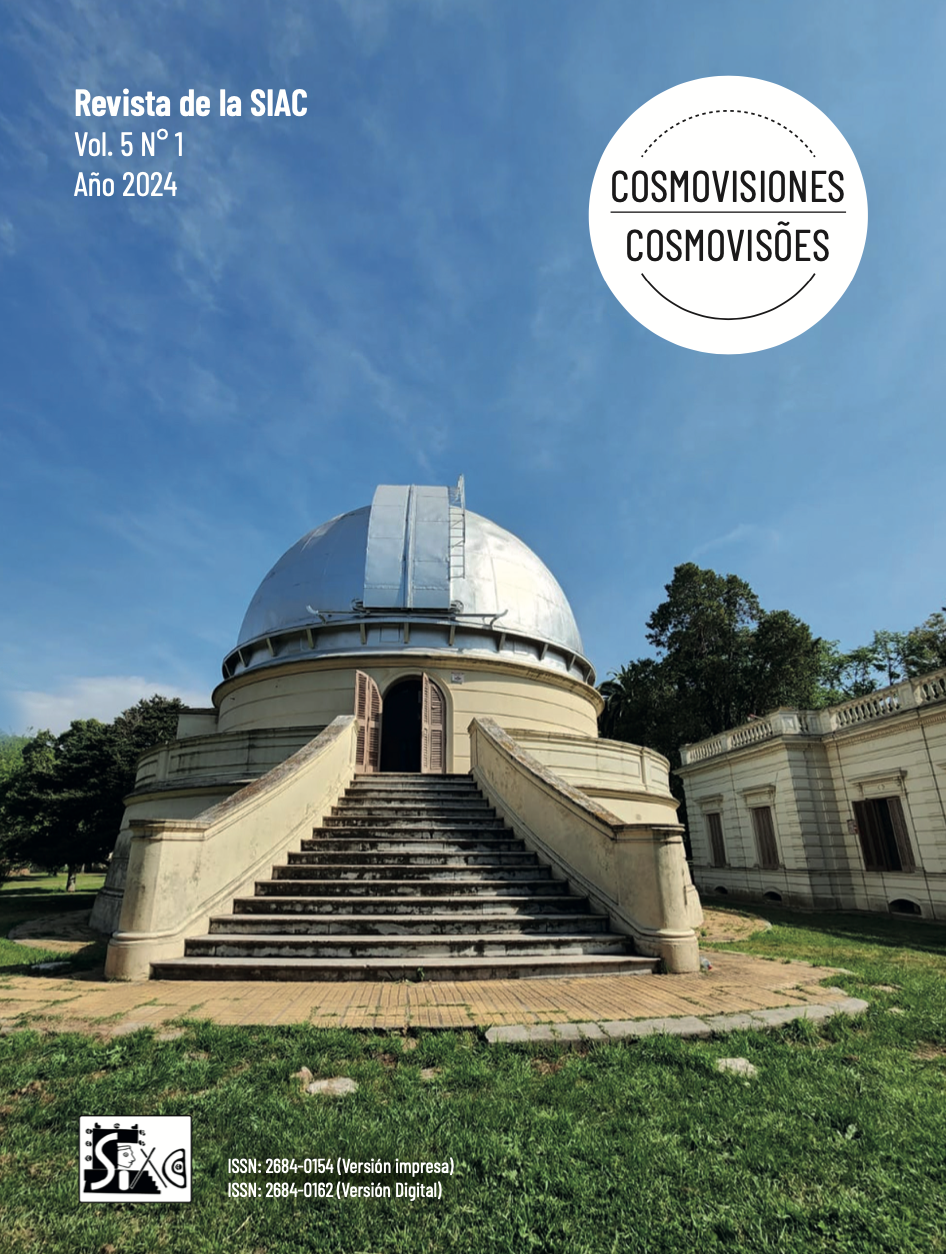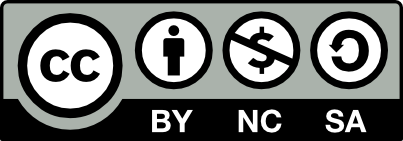El tiempo grabado en piedra: astromorfos en el abrigo rocoso de Ayasta, Honduras
DOI:
https://doi.org/10.24215/26840162e005Palabras clave:
Ayasta, arte rupestre, arqueoastronomía, astromorfos, solsticio de diciembreResumen
En este trabajo se presentan los resultados obtenidos del análisis arqueoastronómico del arte rupestre de los abrigos rocosos de Ayasta, Honduras. En las paredes de estos abrigos rocosos se han identificado diversos motivos, siendo los más numerosos los de tipo antro- pomórfico, zoomórfico y geométrico. Sin embargo, los estudios y análisis arqueológicos han dejado de lado motivos que se pueden relacionar claramente con fenómenos astronómicos (que denominamos astromorfos). Entre ellos consideramos también los geométricos que aparecen como espirales así como las series de círculos concéntricos. Estos últimos tipos de motivos han venido interpretándose en el arte rupestre de varias ubicaciones del continente americano como marcadores de las posiciones extremas del sol.
Dada la peculiar orografía del horizonte local y la ubicación en un angosto valle del abrigo rocoso, la herramienta que se utiliza en este análisis es el software arqueoastronómico denominado Chan U’Bih, desarrollado dentro del Departamento de Arqueoastronomía y Astronomía Cultural de la Facultad de Ciencias Espaciales de la Universidad Nacional Au- tónoma de Honduras. A través de este software es posible realizar simulaciones que re- presenten el horizonte local y las trayectorias solares. De esta forma, se han identificado los fenómenos de luz y sombra sobre los astromorfos, producto de la interacción entre el borde externo del techo del abrigo, la línea del horizonte y los rayos del Sol, en el momento de su salida en las fechas mencionadas.
Por último, se presentan los datos tomados de las visitas al abrigo durante el solsticio de invierno en el hemisferio Norte como forma de contrastar los modelos presentados anteriormente y se exponen tanto las conclusiones que se derivan del trabajo y análisis previo, como las hipótesis de trabajo que se infieren de las conclusiones obtenidas hasta la fecha y la metodología para poder verificarlas.
Descargas
Citas
Chapman, A.M. (1992) Masters of Ani- mals. Amsterdam: Gordon and Breach.
Eliade, M. (1976) El chamanismo y las técnicas arcaicas del éxtasis. México: Fon- do de Cultura Económica.
Krupp, E.C. (2003) Echoes of the Ancient Skies. Mineola, New York: Dover Publica- tions Inc.
McKittrick, A. (2008) Arte rupestre en Honduras. En Kuenne, M. y Strecker, M. (Eds.) Arte Rupestre en México Oriental y América Central, 2a. Edición, Berlin: Gebrüder Mann Verlag.
Mena Cabezas, I.R. (2008) Tradición y cambio cultural en los chortís de Hon- duras. Gazeta de Antropología. 24(2). https://www.ugr.es/~pwlac/G24_47Igna- cioR_Mena_Cabezas.html. Consultado: 25/3/2023.
Rodas-Quito, E.; Mejuto, J. (2018) First steps towards obtaining cultural astro- nomy software. Mediterranean Archaeo- logy and Archaeometry. 18(4), 485-491.
Rodríguez Mota, F.; Figueroa, A. (2008) Manual Básico de Arte Rupestre en Hon- duras. Tegucigalpa: Instituto Hondureño de Antropología e Historia.
Rodríguez Mota, F.; Figueroa, A. y Juárez Silva, R. (2003) El Arte Rupestre en Honduras – Metodología para su Estudio, Conservación e Interpretación.Yaxkin. XXIII. 74-91.
Sofaer, A.P.; Sinclair, R.M. (2008) Astro- nomical Markings at Three Sites on Faja- da Butt. En Aveni, A. (Ed.) Foundations of New World Cultural Astronomy. Boulder, Colorado: University Press of Colorado.
Velásquez, R. (1980) El Chamanismo misquito de Honduras, Yaxkin. III (4) 273- 310.
Descargas
Publicado
Cómo citar
Número
Sección
Licencia
Derechos de autor 2024 Javier Mejuto González, Eduardo Rodas-Quito

Esta obra está bajo una licencia internacional Creative Commons Atribución-NoComercial-CompartirIgual 4.0.
Los autores que publican en esta revista están de acuerdo con los siguientes términos:
Los autores conservan la autoría intelectual del trabajo y garantizan a la revista el derecho de ser la primera publicación del trabajo.
Los autores pueden compartir el trabajo con un reconocimiento de la autoría y la publicación inicial en esta revista.
Los autores pueden establecer por separado acuerdos adicionales para la distribución no exclusiva de la versión de la obra publicada en la revista (por ejemplo, situarlo en un repositorio institucional o publicarlo en un libro), con un reconocimiento de su publicación inicial en esta revista.
La revista ofrece acceso libre ("open access") a todo su contenido. Los artículos se encuentran disponibles para ser leídos, descargados, copiados, impresos y/o investigados de acuerdo a la licencia Creative Commons: CC BY-NC-SA (Atribución - No Comercial - Compartir Igual-4.0 Internacional)

El contenido de la revista queda completamente disponible a partir de su publicación. Los lectores tienen por obligación citar correctamente a la revista y al autor del contenido descargado
















